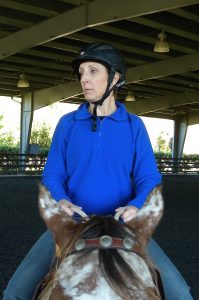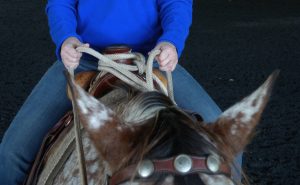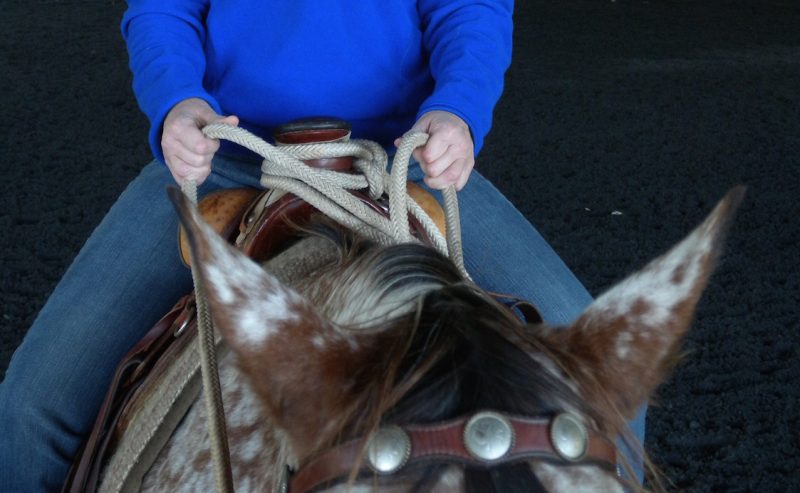
Use this Murdoch Minute to improve your circles and turns. When you align your head with your pelvis and turn as one, your horse will hear a clear turn signal that will require much less use of the reins.
Turning Issues
Do you have trouble turning your horse? Feel like he is ignoring you? Look where you are going only to have your horse go straight ahead? Riders are commonly told to look where they want to go when riding a turn. This instruction is true to a point, however overlooking your turn (looking too far ahead) can create just as many problems with turning as not looking where you are going can create.
The next time you ride notice what happens when you ride circles and turns. Do you look down? How far ahead do you look? How much do you need to use your reins? Do you know if your horse’s head is turned in the direction of the turn? Or is he looking to the outside of the circle? Perhaps you are unaware of where his head is in relation to the turn. This may be part of your difficulty.
What not to do
Pretty much everyone acknowledges that looking down is not a good idea when riding circles and turns, although it is very common to observe riders doing this. Looking down causes the rider to tip forward, puts more weight on the horse’s forehand and can make a horse stop in front of a jump. Looking down often occurs when you concentrate on what you are feeling.

The opposite, overlooking, disconnects the rider’s head, neck and eyes from the rest of her body. The horse in that instance is going to follow the seat, which hasn’t turned, rather than the rider’s eyes, which are looking well past the line of travel. (The line of travel is the line you would ride if it were traced out in front of you like a chalk line on the ground.)
The “Goldilocks” Principle
As with most things, in the end we want the middle. I think of this as the “Goldilocks Principle”: “This is too much, this is too little, this is just right!” “Just right” is when your head is in line with your body on the turn. You can still use your peripheral vision to see where you are going, but you can also see what your horse is doing and ensure that he too is looking on the line of travel.
If your horse is looking in the opposite direction of travel he will be stiffening his spine instead of bending on the circle. I think of the horse’s nose like a fork in a pot of cooked spaghetti – the whole body needs to follow the head! If the head is cocked to the outside or pulled too much to the inside his body will be stiff like uncooked spaghetti and not flow around the turn.
Mounted
To solve your overlooking problem keep your nose in line with your horse’s ears. You can experiment by lining up with either the inside or outside ear. Each is slightly different so find out which works best for you. Keep your nose lined up as you ride circles and turns to ensure that your horse is looking where you intend to go. Allow yourself to see the line of travel in front of you using your peripheral vision so that you can see your horse’s head and where you are going at the same time. Make sure you initiate your turns from your seat and not just your head. Allow your torso to turn as one rather than overturning your neck and then having to use the reins to make your horse turn.

And always remember to enjoy the ride!
By Wendy Murdoch
Copyright© 2014. All rights reserved.




